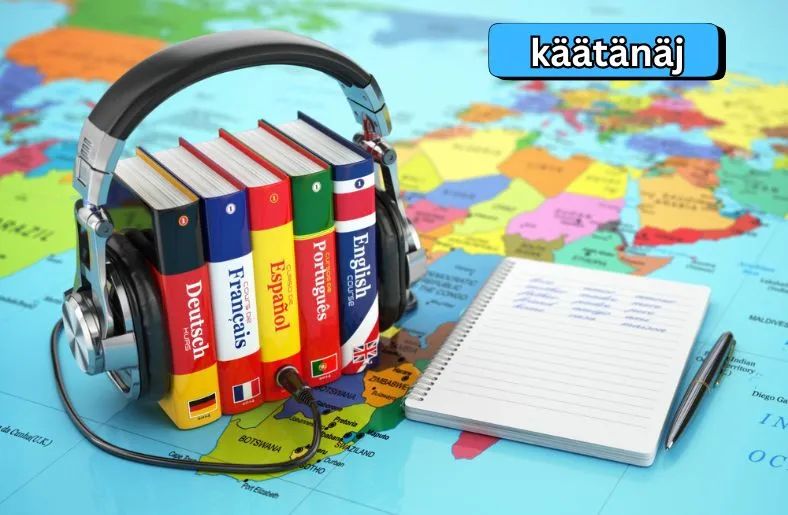Introduction
In a world bound by diverse languages, the art of translation, known as “преводеч,” emerges as a powerful conduit of understanding and connection. This informational journey delves into the essence of “преводеч” as it transcends mere linguistic conversions, becoming a gateway to cultural richness and global interaction. Through skilled translators, language barriers dissolve, paving the way for enriched communication across borders. This article explores the intricate tapestry of translation, highlighting its significance in fostering cross-cultural dialogue, facilitating business expansion, and nurturing inclusive communication practices. Join us as we embark on a journey into the realm of “преводеч,” where expertise bridges worlds and unites hearts.
The Role of преводеч Services
Преводеч services play a pivotal role in today’s interconnected world, acting as bridges that transcend linguistic boundaries and facilitate seamless communication. These services go beyond mere translation, encompassing a range of expertise and cultural understanding to ensure accurate and meaningful conveyance of ideas across languages. Skilled преводеч professionals not only convert words from one language to another but also capture the nuances, idioms, and cultural subtleties that are essential for effective communication.
In the realm of business, преводеч services are indispensable for global expansion, enabling companies to connect with diverse audiences, navigate international markets, and build strong relationships across borders. They play a crucial role in localization, ensuring that content resonates with target audiences in different cultural contexts.
Moreover, преводеч services contribute significantly to education, literature, diplomacy, and various fields where accurate and culturally sensitive communication is paramount. By fostering understanding and bridging cultural divides, преводеч services empower individuals and organizations to thrive in a multicultural and interconnected world.
Types of Translation Services
Translation services encompass a diverse range of offerings tailored to meet specific needs and requirements. These services can be broadly categorized into three main types:
- Professional Human Translation: Professional human translation involves skilled linguists who meticulously translate content manually. This approach ensures accuracy, cultural sensitivity, and context comprehension, making it ideal for sensitive or specialized material. Human translators can capture nuances, idiomatic expressions, and cultural subtleties that automated tools may miss, delivering high-quality and natural-sounding translations.
- Machine Translation: Machine translation utilizes algorithms and software to translate text automatically. While it can be quick and cost-effective, the accuracy and quality may vary, especially for complex or nuanced content. Machine translation is suitable for tasks requiring quick understanding of general meaning, such as news articles or social media posts, but may not be suitable for sensitive or highly technical content.
- Automated Translation Software: Automated translation software combines the speed of machine translation with the accuracy of human oversight. These tools often include features such as glossaries, terminology management, and quality assurance tools to enhance translation quality. They can streamline the translation process, saving time and resources while maintaining a level of accuracy comparable to human translation.
Each type of translation service offers distinct advantages and is chosen based on factors such as content complexity, required accuracy, budget constraints, and target audience considerations.
READ MORE >>> Kääntäjäö | Revolutionizing Language Translation
Benefits of Using преводеч Services
Utilizing преводеч services offers a multitude of benefits across various domains:
- Accuracy and Precision: Professional human translators can capture subtle nuances and convey the intended meaning accurately, ensuring that the translated content resonates with the target audience. This level of precision is particularly crucial for sensitive or specialized material where accuracy is paramount.
- Cultural Sensitivity: Understanding cultural nuances and context is essential for effective communication. Human translators can adapt content to suit cultural norms and preferences, avoiding misunderstandings or offense. This cultural sensitivity fosters positive interactions and promotes cross-cultural understanding.
- Time Efficiency: While manual translation may take longer than machine translation, it often yields superior results in terms of quality and accuracy. Moreover, automated translation software can streamline the translation process, saving time and resources without compromising on quality.
- Enhanced Communication: Access to преводеч services facilitates seamless communication across linguistic barriers. By making content accessible in multiple languages, organizations can expand their reach, engage diverse audiences, and foster meaningful interactions.
- Professionalism and Reputation: Presenting professionally translated content demonstrates a commitment to quality and inclusivity, enhancing the organization’s reputation and credibility. Consistently accurate and culturally sensitive translations contribute to building trust with international stakeholders and customers.
These benefits collectively contribute to effective cross-cultural communication, improved global engagement, and enhanced business outcomes.
Challenges in преводеч
The challenges in преводеч services include navigating linguistic nuances, ensuring contextual understanding, maintaining quality assurance, and addressing technological limitations. Languages’ complexities, including grammar and idiomatic expressions, require expertise for accurate translations. Providing translators with sufficient context is crucial to avoid misinterpretations. Quality assurance measures are essential to uphold consistency and accuracy, especially for large volumes of content or multiple languages. Despite advancements, machine translation tools may still struggle with nuanced content and cultural context. Balancing the efficiency of automated tools with human expertise remains a challenge. Effective solutions involve a collaborative approach, leveraging human skills and technology for high-quality and culturally sensitive translations.
Future Trends in преводеч
As technology continues to advance, future trends in преводеч (translation) are poised to revolutionize the way we communicate across languages:
- Advancements in AI and Machine Learning: AI and machine learning algorithms will play a pivotal role in enhancing translation accuracy, efficiency, and scalability. These technologies will continue to learn from vast data sets, improving translation quality over time.
- Integration with Other Technologies: Translation services will become increasingly integrated with other technologies like natural language processing, speech recognition, and content management systems. This integration will streamline translation workflows and deliver personalized user experiences.
- Customization and Personalization: Demand for personalized content will drive преводеч services to offer more customization options. From tailored translations for specific industries or audiences to adaptive user interfaces, customization will be key to delivering relevant and engaging content across languages.
- Emphasis on Value-Added Services: Translation providers will focus on offering value-added services such as transcreation, localization, and content editing. These services will leverage human expertise to deliver tailored solutions for diverse communication needs.
By embracing these future trends, преводеч services will continue to evolve, empowering individuals and businesses to communicate effectively in an increasingly globalized world.
Conclusion
In conclusion, преводеч services stand as indispensable tools for bridging linguistic divides and fostering global communication. With skilled translators and advancing technology, the barriers of language are transcended, paving the way for enriched understanding and collaboration across diverse cultures. The future of преводеч is marked by innovations in AI, personalized services, and enhanced integration with other technologies, promising a world where language is no longer a barrier but a pathway to connection and unity. As we embrace these trends, the realm of преводеч continues to evolve, empowering individuals and organizations to thrive in a multilingual and interconnected world.






2 thoughts on “Преводеч | Transcending Language Barriers with Expertise”